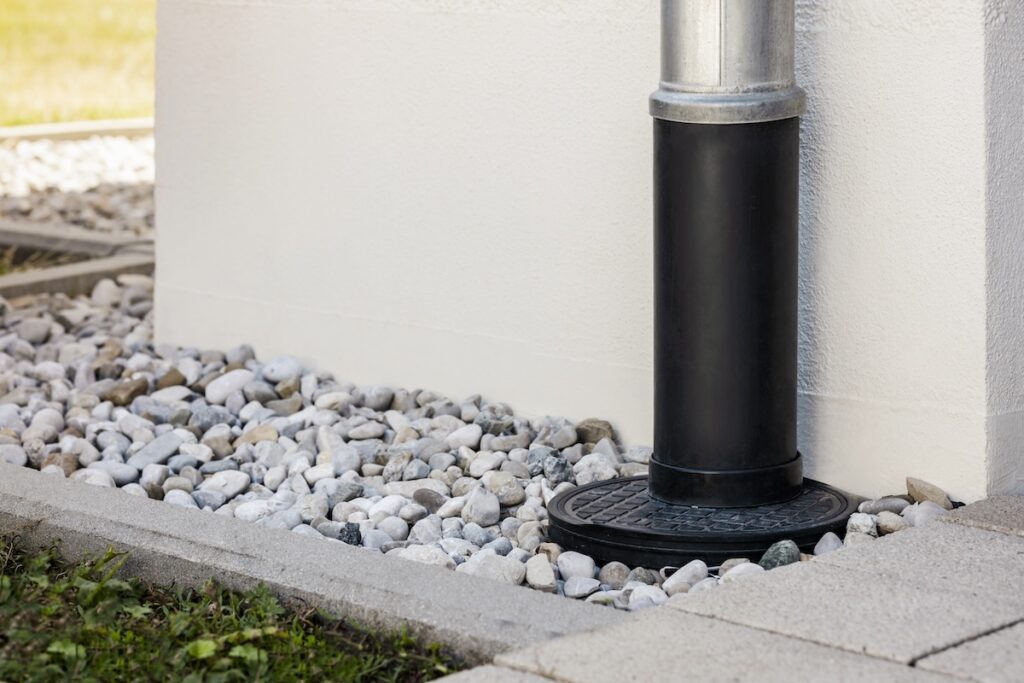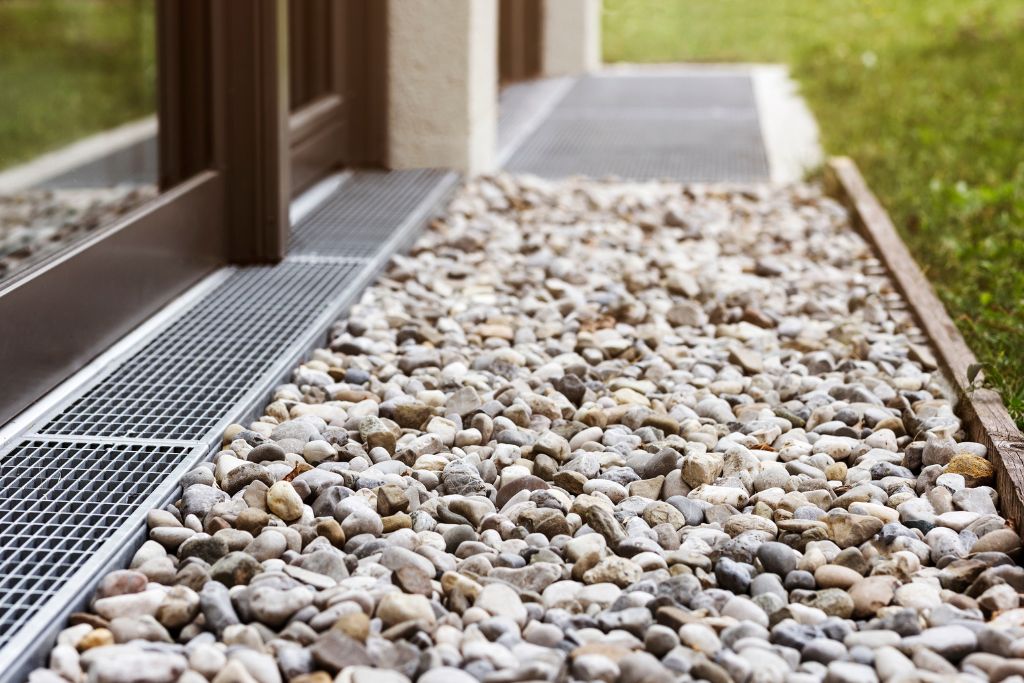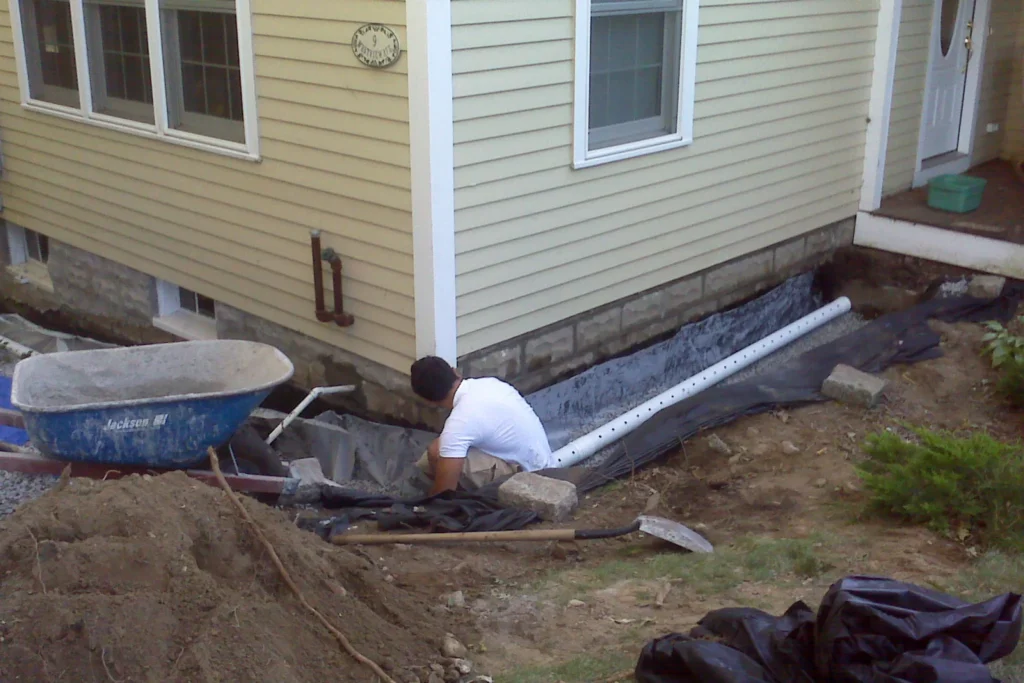What Is the Purpose of a French Drain? Drainage Solved Fast
Grease traps are vital for maintaining a clean and efficient kitchen plumbing system by preventing fats, oils, and grease (FOG) from clogging drains.
However, over time, grease buildup can lead to unpleasant odours and performance issues.
In this guide, we’ll show you how to clean your grease trap under the sink with easy, step-by-step instructions to keep everything running smoothly.
What is the purpose of a French drain?
The purpose of a French drain is to redirect water away from areas like basements or yards. It prevents flooding by allowing water to flow freely through gravel and a perforated pipe.
Key Takeaways
- A French drain is designed to redirect excess water from areas where it can cause damage, such as basements, yards, or foundations.
- It works by using a trench filled with gravel or rock and a perforated pipe to channel water away from problem areas.
- Installing a French drain can prevent water-related issues like flooding, erosion, and foundation damage.
What is a French Drain?

A French drain is a type of drainage system used to redirect excess water away from certain areas of your property.
It’s typically made up of a trench that’s filled with gravel, rock, or another type of aggregate material, with a perforated drainage pipe running through it.
The drainage pipe is designed to collect and direct water that collects around the foundation or in other low-lying areas.
Originally developed in the 19th century by engineer Henry French, this simple yet effective system has been used for decades to prevent water damage, reduce flooding, and protect the structural integrity of homes and buildings.
How Does a French Drain Work?
The function of a French drain is relatively simple but highly effective.
When excess water accumulates in areas that aren’t adequately drained, it can cause problems such as flooding, erosion, and foundation issues.
A French drain helps solve these problems by moving water away from these trouble spots.
Water Accumulation: The process starts when water begins to accumulate in an area with poor drainage, such as near the foundation of a house or in low-lying areas of a yard.
Water Infiltration: The perforated pipe inside the French drain allows water to seep through and into the pipe.
The gravel or rock surrounding the pipe helps guide the water into the pipe and ensures that the system is efficient.
Water Redirection: The water then flows through the pipe and is carried away from the problem area to a more suitable location, such as a drainage ditch, a dry well, or a storm drain.
By moving water away from vulnerable areas, a French drain prevents water damage and reduces the risk of flooding.
Why Should You Install a French Drain?

There are several reasons why a French drain might be a smart choice for your property. Below are some of the key benefits of installing a French drain:
1. Prevents Water Damage to Your Foundation
One of the primary reasons to install a French drain is to protect the foundation of your home.
Water pooling around your foundation can seep into cracks and cause structural damage over time.
A French drain redirects water away from the foundation, preventing it from infiltrating and weakening the structure.
Example: In areas like California or Florida, where heavy rainfall or seasonal storms are common, a French drain can be crucial in preventing foundation damage caused by water intrusion.
2. Reduces Flooding in Your Yard
If you live in an area where your yard frequently floods during heavy rain, a French drain can help manage the excess water.
By moving water to a designated drainage area, a French drain can prevent pooling and erosion that could damage your landscaping.
Example: In regions with poor drainage, like parts of Texas or Louisiana, a French drain can prevent yard flooding and maintain the integrity of your garden and lawn.
3. Improves Soil Quality and Reduces Erosion
Excess water can wash away soil, leading to erosion. Installing a French drain helps to prevent this by redirecting water away from vulnerable areas.
As a result, your landscaping and soil quality are protected, ensuring that your yard remains intact and healthy.
4. Prevents Basement Flooding
For homeowners with basements, a French drain can be an invaluable tool in preventing flooding.
By directing water away from the foundation, French drains can help keep basements dry and protect against costly water damage.
Example: In areas like Michigan or Ohio, where basements are common and prone to flooding during the rainy season, a French drain system can be an essential part of the home’s water management strategy.
Types of French Drains
There are several types of French drains to consider, depending on your specific needs. Below are the most common types:
1. Traditional French Drain
A traditional French drain consists of a trench filled with gravel or rock, with a perforated pipe running through it.
This type of system is effective for redirecting water away from large areas, such as yards or around the foundation of a house.
2. Surface Drain
A surface drain is a French drain system that is used when water collects on the surface of your yard, typically in low-lying areas.
Instead of digging a deep trench, a surface drain uses a shallow trench with a perforated pipe and gravel to guide the water away from the surface.
3. Dry Well Drain
A dry well drain involves using a perforated pipe connected to a dry well, which allows water to infiltrate into the ground.
This system is ideal for areas where surface water needs to be absorbed into the soil rather than redirected to another location.
How to Install a French Drain

While installing a French drain can be a DIY project, it’s important to plan the French drain installation carefully and ensure that it’s done correctly.
Here are the general steps involved in installing a French drain:
1. Planning and Location
Before you begin digging, plan where you want the drain to be located. The drain should be placed in an area where water accumulates and needs to be redirected.
It’s also important to ensure that the water will be carried away from your home or any other vulnerable structures.
2. Dig the Trench
Using a shovel or trenching machine, dig a trench where you plan to install the French drain. The trench should be about 6 to 12 inches wide and at least 18 to 24 inches deep.
Ensure that the trench has a slight slope so that water flows away from the problem area.
3. Lay Down Gravel or Rock
Once the trench is dug, lay a layer of gravel or rock at the bottom of the trench to promote drainage. This will also help filter water and prevent the perforated pipe from getting clogged.
4. Install the Perforated Pipe
Place the perforated pipe on top of the gravel. The holes in the pipe should be facing down so that water can easily enter.
If you are using a surface drain, make sure the pipe is level, so water flows efficiently.
5. Fill the Trench with More Gravel
Cover the pipe with more gravel or rock to secure it in place. Make sure to leave some space at the top for the final layer of soil or sod.
This will help ensure proper drainage and prevent the pipe from being obstructed by dirt.
6. Cover the Drain
Once the pipe is secure, cover the gravel with soil or sod to blend it into the landscape. This will protect the pipe and provide a more natural appearance.
Maintaining a French Drain
Maintaining your French drain is essential to ensuring it continues to function properly. Here are some maintenance tips:
Clean the Drain: Periodically check the drain for debris or sediment buildup. Remove any dirt or leaves that may have entered the system, especially after heavy rains.
Inspect the Pipe: Ensure the perforated pipe remains clear and free of blockages. If necessary, flush the pipe with water to remove any obstructions.
Check the Outlet: Make sure the water is being directed to the proper location, such as a dry well or storm drain. Ensure that the outlet is not clogged or blocked by debris.
Frequently Asked Questions
1. How much does it cost to install a French drain?
The cost of installing a French drain can vary depending on the size of the area, materials used, and whether you hire a professional. On average, it costs between $1,000 and $5,000.
2. How long does a French drain last?
A well-installed French drain can last 30 to 40 years or more with proper maintenance. Regular cleaning and inspection will help extend its lifespan.
3. Can I install a French drain myself?
Yes, installing a French drain can be a DIY project if you have the right tools and knowledge. However, if the project is large or complex, it may be best to hire a professional.
Conclusion
A French drain is an effective solution for preventing water damage and managing drainage issues around your home.
Whether you’re dealing with a flooded yard, basement, or foundation, this simple yet powerful system can help direct water away from problem areas.
By understanding how a French drain works, how to install it, and how to maintain it, you can improve your home’s drainage and protect your property from water damage.
